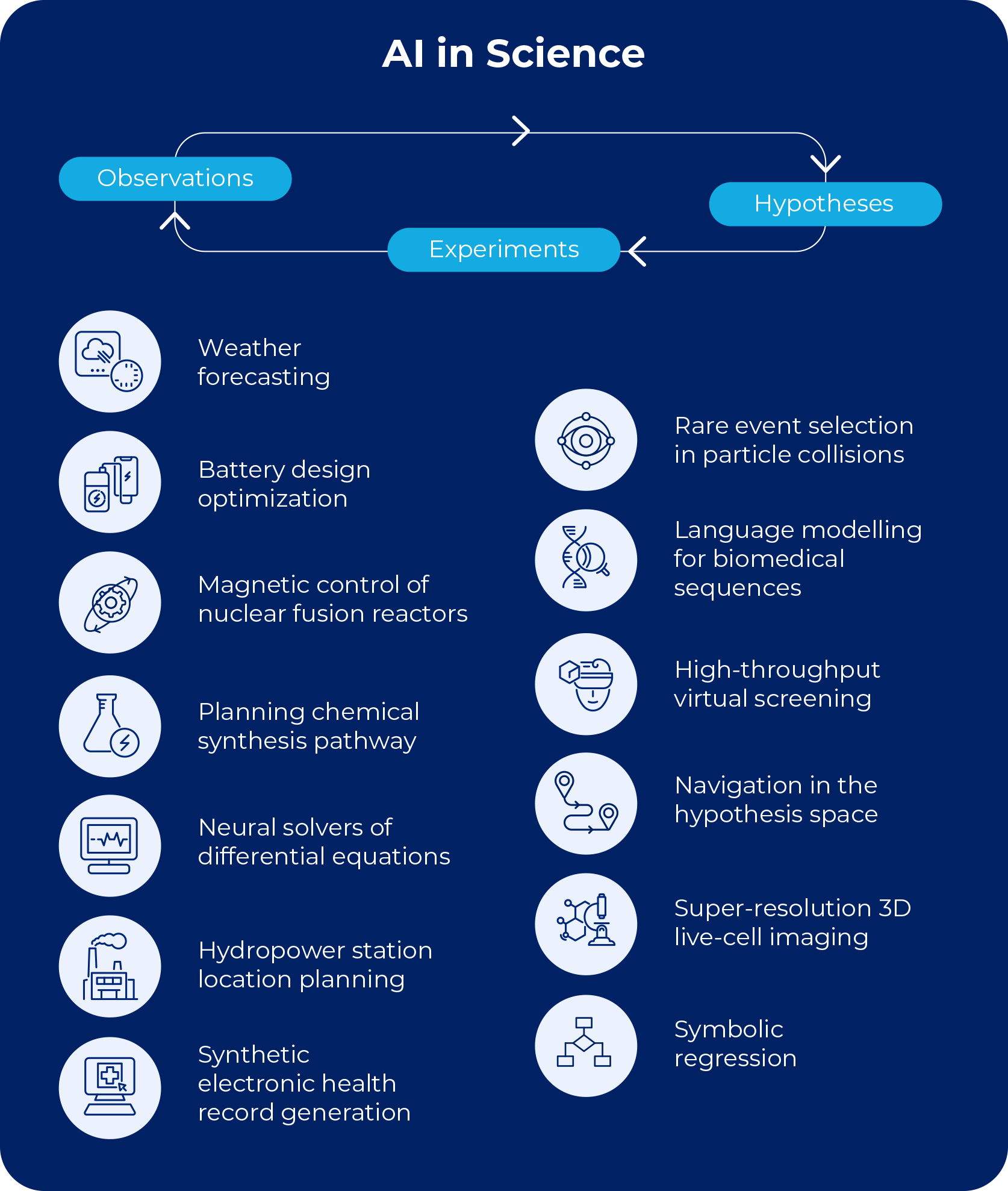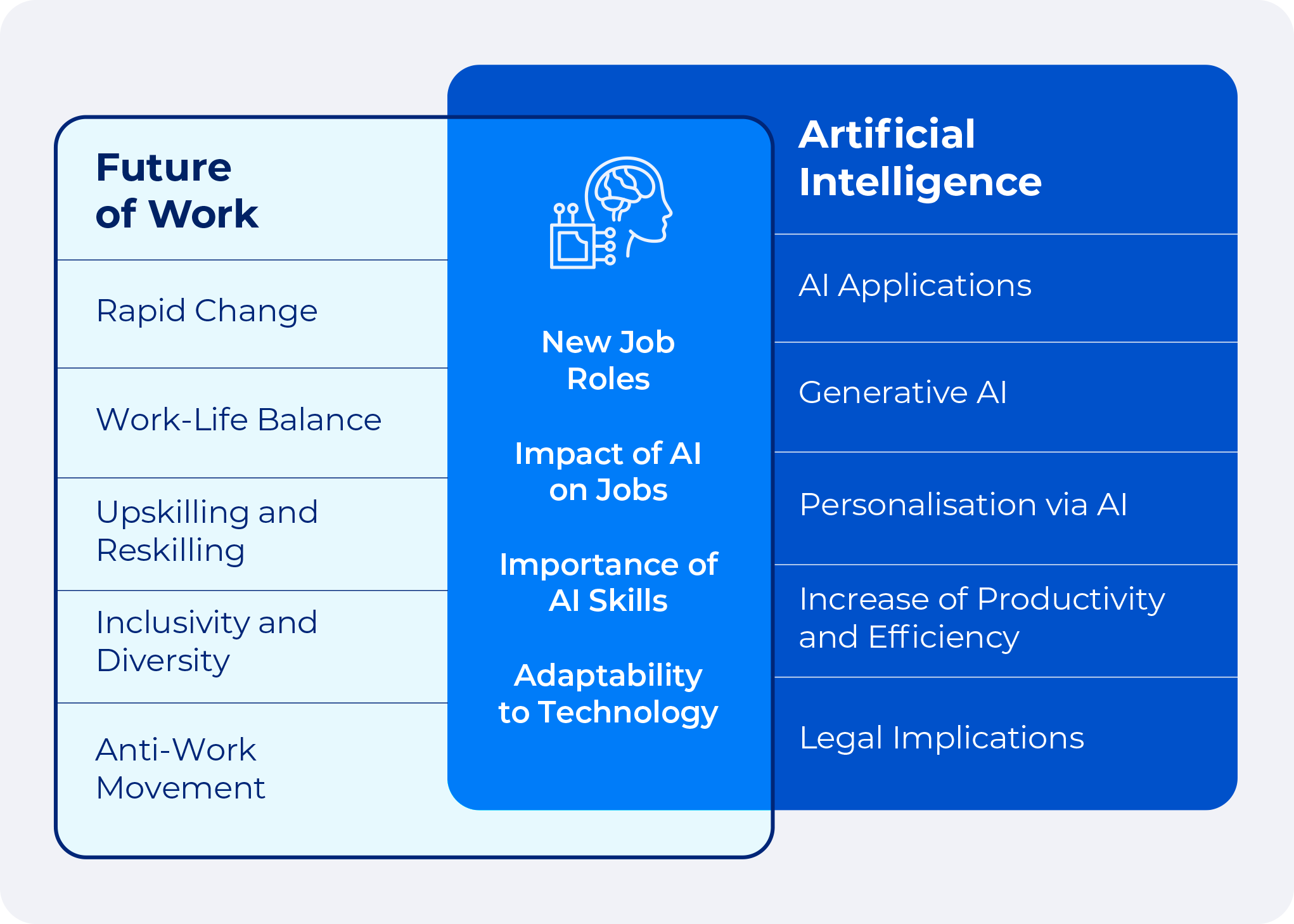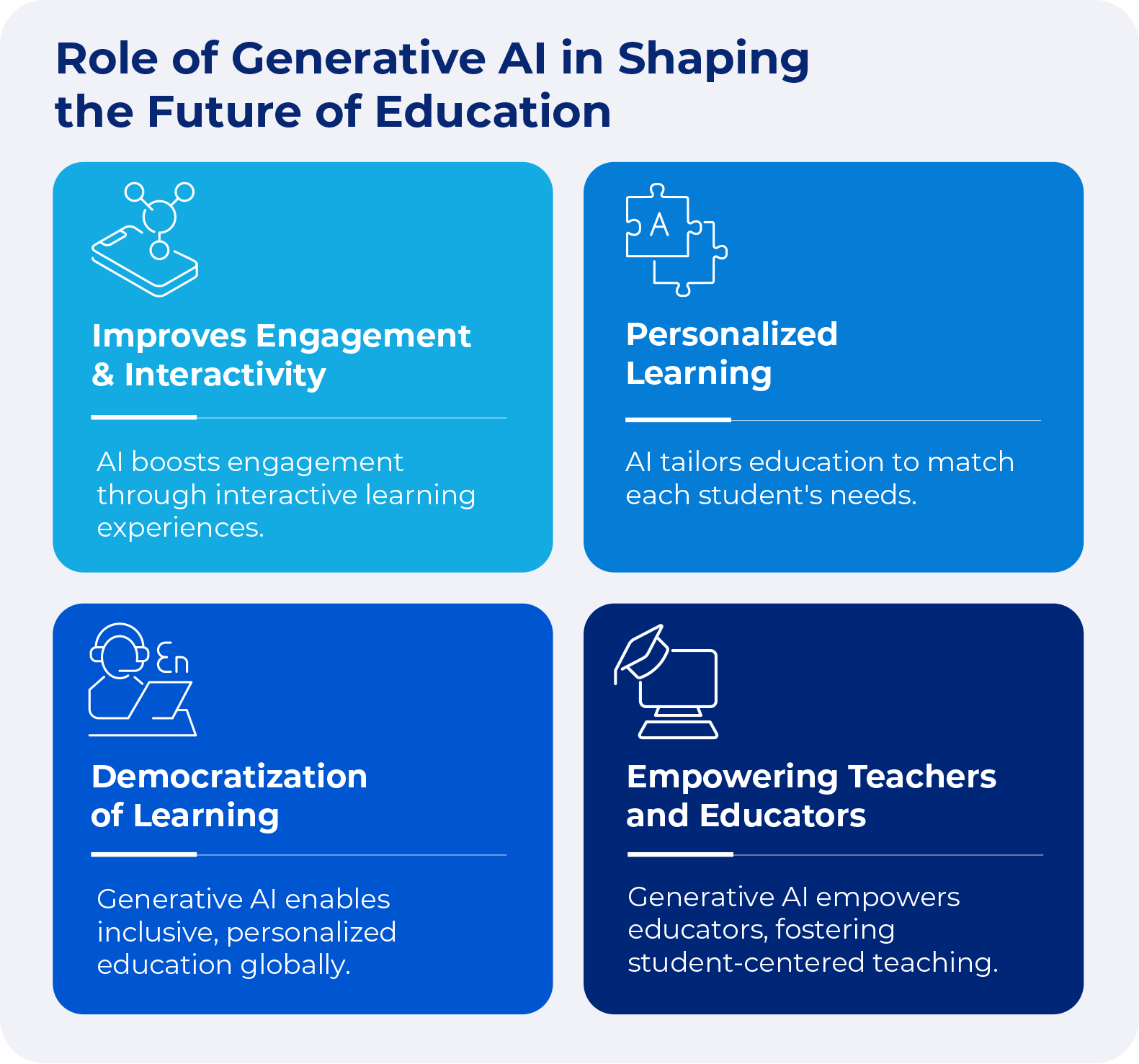Thanks to AI, the way we approach problem-solving, creativity, and discovery will never be the same. AI technologies evolve constantly, and as they mature, society sees significant optimizations in all types of existing processes. As a result, we are witnessing a new era of innovation and transformation across industries and the world at large.

As we move forward with this AI-driven transformation, it’s important to remain aware of the multifaceted impact AI is having on innovation and to examine its applications across various sectors. In this article, we explore how this technology is augmenting human capabilities and helping us reimagine the very nature of creativity and invention. We also look at some of the challenges it presents and why we must collectively proceed with caution.
The evolution of AI as an innovation catalyst
Artificial intelligence transitioned from a futuristic concept to an innovation driver in just a few years. Its evolution has seen significant milestones and breakthroughs. Early AI systems had limited capabilities and relied on rule-based approaches that had difficulty solving complex problems. However, machine learning, and especially deep learning algorithms, dramatically expanded the potential of AI. It can now tackle intricate challenges across diverse domains.
One of the key developments in AI’s evolution is the emergence of generative AI models. They create new content, designs, and solutions based on learned principles. Creative and scientific endeavors alike are benefitting. AI can generate realistic images and compose music. It can even design new molecules and materials. All of this is pushing the boundaries of what’s possible both in art and science.
To put matters in perspective further, we need to mention the integration of AI with other cutting-edge technologies. These include the Internet of Things (IoT) and quantum computing. It enhances AI’s innovative potential and enables better data collection and decision-making. Every day, we are seeing breakthroughs in fields ranging from personalized medicine to sustainable energy solutions.
AI in scientific discovery and research
AI’s impact on scientific discovery is remarkable. Researchers use it to accelerate their work by employing data analytics and machine learning algorithms. AI helps them uncover insights that traditional methods couldn’t discern.
In astronomy, for example, AI algorithms process telescope data to identify celestial objects and even predict cosmic events. The technology has helped the discovery of new exoplanets and allowed researchers to identify previously unknown galaxy clusters. Thanks to AI, scientists are now gaining a deeper understanding of the universe’s structure and evolution.
AI is also changing how scientists approach research in genomics and molecular biology. When it comes to complex genetic data, they employ machine learning models. Thus, they can predict protein structures and identify targets for drug development. The reason is that it speeds up research and helps scientists solve problems that were once too complex or required too much data.
AI is also making a great impact on climate science. Weather experts use it to develop more precise forecasts and to predict extreme weather events. AI systems also help them understand climate patterns better. The technology analyzes vast datasets from satellites and weather stations. On a bigger scale, Artificial Intelligence is a great tool for developing strategies for reducing the effects of climate change.

Source: nature.com
Transforming industries through AI innovation
AI is becoming exceptionally versatile, and its application goes beyond healthcare and scientific research. It has the potential to reshape industries across the economic spectrum. AI-driven systems are optimizing processes, creating new business models and redefining industry landscapes.
AI in manufacturing is said to be driving the fourth industrial revolution. It’s even referred to as Industry 4.0. The technology’s predictive capabilities come in handy in preventing equipment failures and optimizing production schedules. It also helps companies navigate changing market demands in real time. Manufacturing players are seeing results like increased efficiency, reduced waste, and better product quality due to the new levels of automation and intelligence.
Finance is another industry that is fully taking advantage of AI’s transformative powers. Financial professionals use AI in areas such as algorithmic trading, fraud detection, personalized financial advice, and more. AI can identify market trends, assess risk, and make investments. What is more, it can perform these operations faster and more accurately than most human agents. In this way, all stakeholders benefit.
Agriculture is also capitalizing on AI’s transformative power. The technology enables precision farming techniques to minimize resource use. It also optimizes crop yields and can monitor crop health and detect pests. Agriculture specialists use AI to guide targeted interventions and analyze soil conditions and weather patterns. AI-driven systems use historical data to give farmers actionable insights that help them improve their operations.
In retail, AI has been instrumental in enhancing customer experience through personalized recommendations. It’s also an invaluable tool for creating dynamic pricing strategies and improving inventory management. AI-powered virtual assistants and chatbots are another aspect of the AI revolution in retail. They provide instant support 24/7 and play a crucial part in customer engagement and retention.
The energy sector is employing AI to align strategies to boost power generation, distribution, and consumption. Smart grids help balance supply and demand better. They can also integrate renewable energy resources and predict outages. AI is an effective tool for improving energy efficiency and transitioning to sustainable energy systems.
AI and the future of work
One aspect of AI that is often overlooked is its impact on the nature of work and the skills required by the modern workforce. AI is creating new opportunities and changing existing roles. However, there are job displacement concerns due to automation. For the most part, however, AI is quickly turning into an indispensable facilitator to existing positions. It cuts research times and allows professionals to focus on higher-value work.
Probably the biggest effect of the AI revolution is the automation of repetitive and routine tasks. This allows companies to focus on more strategic initiatives and other activities that require more creativity or complexity. Tasks that require emotional intelligence and critical thinking to solve a certain problem will always exist. In many cases, AI augments jobs instead of replacing them. It allows workers to collaborate with AI-powered systems to boost productivity and decision-making.
AI is also a great facilitator of remote work, with tools that make virtual collaboration easier and more flexible. It also plays a key role in areas like project management and performance monitoring. This trend, which the COVID-19 pandemic accelerated, is likely to continue to reshape traditional office environments and work cultures.

Source: www.pcma.org
Ethical considerations and challenges in AI-driven innovation
The benefits of AI-driven innovation are becoming more and more obvious. However, they come with certain challenges and ethical considerations. Companies must address them carefully and ensure the responsible development of AI systems since they are becoming increasingly pervasive.
Probably the biggest ethical concern surrounding AI is the potential for bias and discrimination. AI models that have been trained on historical data can reinforce existing biases and lead to unfair outcomes. Potential areas where this can occur include hiring, lending, and criminal justice. To address the issue, organizations need to invest in high-quality technical solutions like improved data collection and algorithm design. They must also create diverse teams and perform ongoing monitoring to make sure AI systems are fair.
Another major concern in the age of AI is privacy. This includes data protection due to the vast amounts of data required to train AI models. Questions about data ownership and consent arise understandably because of potential misuse. Organizations must try to find a balance between data utilization and protecting individual privacy. It’s a complex challenge that demands an open conversation between companies, policymakers, and society.
In many cases, the transparency and explainability of AI systems can be a serious challenge. The decisions that we use AI to make are becoming increasingly serious. They affect human lives in tangible ways, and this increases the demand for explainable AI. As a society, we need clear rationales for AI’s outputs. This is especially true in domains like healthcare, finance, and criminal justice.
AI and the future of education
Thanks to AI, the way educators teach and assess knowledge is transforming. AI is opening up new possibilities in the realms of personalized learning experiences and intelligent tutoring systems. AI-powered adaptive learning platforms can analyze student performance in real time and adjust the difficulty of lessons. This personalized approach can help address the challenges of diverse classrooms and support students who may struggle with traditional methods.
AI is now enabling more flexible teaching methods and learning practices. It does that through intelligent course recommendation systems and virtual reality training simulations. The technology makes it possible to match learners with courses that best fit their goals and learning styles. At the same time, it provides immersive experiences that weren’t realistic until recently.

Source: tist.school
AI in creative industries and the arts
The intersection of AI and creativity is changing what we thought was possible in artistic expression. It provides a medium for new forms of creative output while also being a creative tool itself.
In the visual arts, specifically, AI algorithms can generate original artworks independently or in collaboration with human artists. General adversarial networks (GANs) create images based on descriptions or mix and match elements from various styles. As a result, we are seeing a new genre known as ‘AI art’ that challenges traditional notions of creativity.
The application of AI in creative fields sparks discussions about authorship, the value of expression, and whether or not the technology adds to rather than replaces human creativity. AI’s importance for artists and creators will only increase over the next few years, further challenging our ideas about artistry.
The impact of AI on decision-making and governance
AI’s applications in decision-making are becoming increasingly frequent. It’s changing how companies and governments tackle problems, process data and execute solutions in their business strategy and public policy.
Businesses leverage AI for analytics that support critical decision-making. They examine market data, consumer behavior patterns, and economic indicators. AI systems identify trends, predict market fluctuations, and suggest strategies in an informed and fast way that often surpasses traditional analysis methods.
Another area where AI’s use is growing is justice. AI-driven tools assist in legal research, predict case outcomes, and even support sentencing decisions. These applications are set to increase efficiency and consistency in the legal system. They also raise questions about fairness, accountability, and the role of human judgment in the administration of justice.
Conclusion
AI has the potential to transform fields like science, healthcare, and education and even address global challenges such as climate change. To achieve this, we as a society must manage ethical, social, and economic concerns.
It has already become clear that future innovation will depend on advanced collaboration between humans and AI. These partnerships can lead to outcomes that can’t be reached separately.
In this context, responsible development is crucial. Ethical standards, transparency, and accountability must guide AI progress to ensure a future that is inclusive, sustainable, and aligned with human values.



